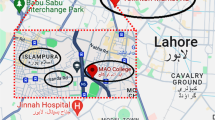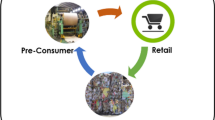Abstract
With recently legislated maximum levels of inorganic arsenic (iAs) in white and brown rice in Canada, the regulatory bodies are evaluating the need for regulation of As levels in infant food products. Rice is a major part of infants’ diet, and therefore, the presence of As in this staple food causes concerns. So far, the scientific community was lacking suitable certified reference material (CRM) which could be used to assess the accuracy of developed analytical methods for As speciation in infants’ food products. As a result, we have developed BARI-1, a baby cereal coarse rice flour reference material which was certified for total arsenic (0.248 ± 0.018 mg kg−1), cadmium (0.0134 ± 0.0014 mg kg−1), mercury (0.0026 ± 0.0003 mg kg−1), lead (0.0064 ± 0.0016 mg kg−1), inorganic As (0.113 ± 0.016 mg kg−1) and dimethylarsinic acid (DMA) (0.115 ± 0.010 mg kg−1), and reference value for monomethylarsonic acid (MMA) (0.0045 ± 0.0008 mg kg−1) was reported. We also observed trace amounts of an unknown As compound, with chromatographic retention time close to DMA. Participating laboratories were allowed to use their in-house-validated extraction and/or digestion methods, and the detection of total metals was done by ICP-MS whereas HPLC-ICP-MS was used for As speciation. Despite the diversity in sample preparation and quantitation methods, reported values were in good agreement. For iAs measurement, the comparison between hydride generation ICP-MS and HPLC-ICP-MS found iAs overestimation with the former method, possibly due to interference from DMA. The certification was accomplished with a CRM rapid response approach in collaborative, focused effort completing the CRM development in few months instead of the typical multiyear project. This approach allowed to respond to measurement needs in a timely fashion.

Graphical abstract




Similar content being viewed by others
References
Muthayya S, Sugimoto JD, Montgomery S, Maberly GF. An overview of global rice production, supply, trade, and consumption. Ann N Y Acad Sci. 2014;1324(1):7–14.
Datta D. Principles and practices of rice production: Int. Rice Res. Inst; 1981.
Luh BS. Rice: production and utilization: AVI Publishing Co.; 1980.
Sommella A, Deacon C, Norton G, Pigna M, Violante A, Meharg A. Total arsenic, inorganic arsenic, and other elements concentrations in Italian rice grain varies with origin and type. Environ Pollut. 2013;181:38–43.
Baba K, Arao T, Maejima Y, Watanabe E, Eun H, Ishizaka M. Arsenic speciation in rice and soil containing related compounds of chemical warfare agents. Anal Chem. 2008;80(15):5768–75.
Seyfferth AL, McCurdy S, Schaefer MV, Fendorf S. Arsenic concentrations in paddy soil and rice and health implications for major rice-growing regions of Cambodia. Environ Sci Technol. 2014;48(9):4699–706.
Panaullah GM, Alam T, Hossain MB, Loeppert RH, Lauren JG, Meisner CA, et al. Arsenic toxicity to rice (Oryza sativa L.) in Bangladesh. Plant Soil. 2009;317(1–2):31.
Williams P, Price A, Raab A, Hossain S, Feldmann J, Meharg AA. Variation in arsenic speciation and concentration in paddy rice related to dietary exposure. Environ Sci Technol. 2005;39(15):5531–40.
Williams P, Raab A, Feldmann J, Meharg A. Market basket survey shows elevated levels of As in South Central US processed rice compared to California: consequences for human dietary exposure. Environ Sci Technol. 2007;41(7):2178–83.
Zavala YJ, Duxbury JM. Arsenic in rice: I. estimating normal levels of total arsenic in rice grain. Environ Sci Technol. 2008;42(10):3856–60.
Reed JF, Sturgis M. Toxicity from arsenic compounds to rice on flooded soils. J Am Soc Agron. 1936; 28(6)432-436
Zavala YJ, Gerads R, Gürleyük H, Duxbury JM. Arsenic in rice: II. Arsenic speciation in USA grain and implications for human health. Environ Sci Technol. 1936;28(6):432–6..
Meharg AA, Williams PN, Adomako E, Lawgali YY, Deacon C, Villada A, et al. Geographical variation in total and inorganic arsenic content of polished (white) rice. Environ Sci Technol. 2009;43(5):1612–7.
Batista BL, Souza JM, De Souza SS, Barbosa F Jr. Speciation of arsenic in rice and estimation of daily intake of different arsenic species by Brazilians through rice consumption. J Hazard Mater. 2011;191(1–3):342–8.
Hansen HR, Raab A, Price AH, Duan G, Zhu Y, Norton GJ, et al. Identification of tetramethylarsonium in rice grains with elevated arsenic content. J Environ Monit. 2011;13(1):32–4.
Hua B, Yan W, Wang J, Deng B, Yang J. Arsenic accumulation in rice grains: effects of cultivars and water management practices. Environ Eng Sci. 2011;28(8):591–6.
Ye J, Rensing C, Rosen BP, Zhu YG. Arsenic biomethylation by photosynthetic organisms. Trends Plant Sci. 2012;17(3):155–62.
Batista BL, Nigar M, Mestrot A, Rocha BA, Barbosa Junior F, Price AH, et al. Identification and quantification of phytochelatins in roots of rice to long-term exposure: evidence of individual role on arsenic accumulation and translocation. J Exp Bot. 2014;65(6):1467–79.
Zhu YG, Williams PN, Meharg AA. Exposure to inorganic arsenic from rice: a global health issue? Environ Pollut. 2008;154(2):169–71.
Hughes MF. Arsenic toxicity and potential mechanisms of action. Toxicol Lett. 2002;133(1):1–16.
IARC. Arsenic and arsenic compounds. 2012. Available from: http://monographs.iarc.fr/ENG/Monographs/vol100C/mono100C-6.pdf.
European Food Safety Authority. Dietary exposure to inorganic arsenic in the European population. 2014.
Signes-Pastor AJ, Cottingham KL, Carey M, Sayarath V, Palys T, Meharg AA, et al. Infants’ dietary arsenic exposure during transition to solid food. Sci Rep. 2018;8(1):7114.
Signes-Pastor AJ, Woodside JV, McMullan P, Mullan K, Carey M, Karagas MR, et al. Levels of infants’ urinary arsenic metabolites related to formula feeding and weaning with rice products exceeding the EU inorganic arsenic standard. PLoS One. 2017;12(5):e0176923.
Ljung K, Palm B, Grander M, Vahter M. High concentrations of essential and toxic elements in infant formula and infant foods - a matter of concern. Food Chem. 2011;127(3):943–51.
Hernández-Martínez R, Navarro-Blasco I. Survey of total mercury and arsenic content in infant cereals marketed in Spain and estimated dietary intake. Food Control. 2013;30(2):423–32.
Meharg AA, Deacon C, Campbell RC, Carey AM, Williams PN, Feldmann J, et al. Inorganic arsenic levels in rice milk exceed EU and US drinking water standards. J Environ Monit. 2008;10(4):428–31.
Meharg AA, Sun G, Williams PN, Adomako E, Deacon C, Zhu YG, et al. Inorganic arsenic levels in baby rice are of concern. Environ Pollut. 2008;152(3):746–9.
Juskelis R, Li W, Nelson J, Cappozzo JC. Arsenic speciation in rice cereals for infants. J Agric Food Chem. 2013;61(45):10670–6.
Some baby foods sold in Canada would be ‘illegal in Europe,’ arsenic testing shows [press release]. CBC. 2019.
Commission Regulation (EU). 2015/1006 of 25 June 2015 amending Regulation (EC) No 1881/2006 as regards maximum levels of inorganic arsenic in foodstuffs. Official Journal of the European Union. 2015.
US FDA. Proposes limit for inorganic arsenic in infant rice cereal. 2016.
Health Canada. Health Canada’s proposal to add maximum levels for inorganic arsenic in polished (white) and husked (brown) rice to the list of contaminants and other adulterating substances in foods. 2019.
FAO/WHO. Report of the eighth session of the Codex Comittee on Contaminants in Foods. 2014.
Petursdottir AH, Sloth JJ, Feldmann J. Introduction of regulations for arsenic in feed and food with emphasis on inorganic arsenic, and implications for analytical chemistry. Anal Bioanal Chem. 2015;407(28):8385–96.
Toman B, Possolo A. Laboratory effects models for interlaboratory comparisons. Accred Qual Assur. 2009;14(10):553–63.
Musil S, Pétursdóttir ÁH, Raab A, Gunnlaugsdóttir H, Krupp E, Feldmann J. Speciation without chromatography using selective hydride generation: inorganic arsenic in rice and samples of marine origin. Anal Chem. 2014;86(2):993–9.
Chaney RL, Green CE, Lehotay SJ. Inter-laboratory validation of an inexpensive streamlined method to measure inorganic arsenic in rice grain. Anal Bioanal Chem. 2018;410(22):5703–10.
Marschner K, Petursdottir AH, Bucker P, Raab A, Feldmann J, Mester Z, et al. Validation and inter-laboratory study of selective hydride generation for fast screening of inorganic arsenic in seafood. Anal Chim Acta. 2019;1049:20–8.
Taylor V, Goodale B, Raab A, Schwerdtle T, Reimer K, Conklin S, et al. Human exposure to organic arsenic species from seafood. Sci Total Environ. 2017;580:266–82.
Wolle MM, Conklin SD. Speciation analysis of arsenic in seafood and seaweed: part I-evaluation and optimization of methods. Anal Bioanal Chem. 2018;410(22):5675–87.
Wolle MM, Conklin SD, Wittenberg J. Matrix-induced transformation of arsenic species in seafoods. Anal Chim Acta. 2019;1060:53–63.
Shen S, Li XF, Cullen WR, Weinfeld M, Le XC. Arsenic binding to proteins. Chem Rev. 2013;113(10):7769–92.
Raml R, Goessler W, Francesconi KA. Improved chromatographic separation of thio-arsenic compounds by reversed-phase high performance liquid chromatography-inductively coupled plasma mass spectrometry. J Chromatogr A. 2006;1128(1–2):164–70.
Conklin SD, Fricke MW, Creed PA, Creed JT. Investigation of the pH effects on the formation of methylated thio-arsenicals, and the effects of pH and temperature on their stability. J Anal At Spectrom. 2008;23(5):711–6.
Calatayud M, Bralatei E, Feldmann J, Devesa V, Velez D. Transformation of arsenic species during in vitro gastrointestinal digestion of vegetables. J Agric Food Chem. 2013;61(49):12164–70.
Maher WA, Ellwood MJ, Krikowa F, Raber G, Foster S. Measurement of arsenic species in environmental, biological fluids and food samples by HPLC-ICPMS and HPLC-HG-AFS. J Anal At Spectrom. 2015;30(10):2129–83.
Feldmann J, Krupp EM. Critical review or scientific opinion paper: arsenosugars--a class of benign arsenic species or justification for developing partly speciated arsenic fractionation in foodstuffs? Anal Bioanal Chem. 2011;399(5):1735–41.
Francesconi KA, Kuehnelt D. Determination of arsenic species: a critical review of methods and applications, 2000-2003. Analyst. 2004;129(5):373–95.
Heitkemper DT, Kubachka KM, Halpin PR, Allen MN, Shockey NV. Survey of total arsenic and arsenic speciation in US-produced rice as a reference point for evaluating change and future trends. Food Addit Contam Part B Surveill. 2009;2(2):112–20.
DerSimonian R, Laird N. Meta-analysis in clinical trials. Control Clin Trials. 1986;7(3):177–88.
Standardization IOf. ISO Guide 35, reference materials—guidance for characterization and assessment of homogeneity and stability. Switzerland: ISO copyright office; 2017.
Willie S, Brophy C, Clancy V, Lam J, Sturgeon R, Yang L. DORM-4: fish protein certified reference material for trace metals: National Research Council of Canada; 2012.
Willie S, Brophy C, Maxwell P, Yang L. DOLT-4: dogfish liver certified reference material for trace metals: National Research Council of Canada; 2008.
Kumkrong P, Suladda D, Talakhun T, et al. PRON-1: river prawn certified reference material for trace metals and arsenobetaine: National Research Council of Canada; 2016.
Kumkrong P, Suladda D, Talakhun T, et al. SQID-1: cuttlefish certified reference material for trace metals, arsenobetaine, and methylmercury: National Research Council of Canada; 2016.
GUM. Evaluation of measurement data — Guide to the expression of uncertainty in measurement. JCGM 100:2008.
Acknowledgments
The contributions of Ovi Mihai, Enea Pagliano, Kelly LeBlanc, Indumathi Pihillagawa Gedara and Marie-Pier Thibeault (NRC); Stephen D. Springer, Mitchell W. Kiriluk, Sage Presster, Raquel Asencio, Fiona M. Bellows and Jaqueline M. Aitken (Brooks Applied Labs); and Thippaya Junee Fortune (Thailand Institute of Scientific and Technological Research) are acknowledged.
Author information
Authors and Affiliations
Corresponding author
Ethics declarations
Conflict of interest
The authors declare that they have no conflict of interests.
Additional information
Publisher’s note
Springer Nature remains neutral with regard to jurisdictional claims in published maps and institutional affiliations.
Rights and permissions
About this article
Cite this article
Gajdosechova, Z., Grinberg, P., Nadeau, K. et al. CRM rapid response approach for the certification of arsenic species and toxic trace elements in baby cereal coarse rice flour certified reference material BARI-1. Anal Bioanal Chem 412, 4363–4373 (2020). https://doi.org/10.1007/s00216-020-02673-x
Received:
Revised:
Accepted:
Published:
Issue Date:
DOI: https://doi.org/10.1007/s00216-020-02673-x




